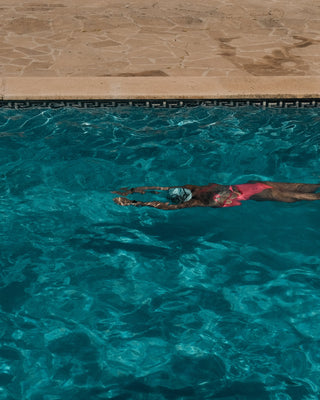High-intensity training gets the spotlight, but the smartest athletes I know are obsessed with something far less flashy:
Zone 2 training.
It’s low-key. It’s steady. And it just might be the most underutilized tool for unlocking endurance, fat metabolism, recovery—and longevity.
If you’re serious about performance that lasts, Zone 2 should be a non-negotiable part of your weekly schedule.
What Is Zone 2 Training?
Zone 2 refers to a specific heart rate range—roughly 60–70% of your max heart rate—where you’re training aerobically (i.e., using oxygen efficiently) but not pushing your system into stress mode.
The experience?
-
You’re breathing through your nose
-
You can hold a conversation
-
It feels almost too easy—until the results compound
It’s the zone where your mitochondria—the power plants of your cells—become more efficient. And that’s a big deal.
Why Zone 2 Is High-Leverage
Here’s why elite endurance athletes, aging biohackers, and strength-focused pros alike are doubling down on Zone 2:
-
Mitochondrial health = energy production + aging defense
-
Improves fat oxidation: You become more efficient at burning fat for fuel
-
Clears lactate faster: So your HIIT sessions get sharper
-
Speeds recovery: Boosts blood flow without further stress
-
Reduces cardiovascular disease risk (massively underappreciated)
Dr. Peter Attia calls it “the single most important form of exercise for extending healthspan.” And he’s not wrong.
How to Implement Zone 2—Without Guesswork
Step 1: Calculate your Zone 2 range
Most people start around:
(180 - your age) ± 5 bpm
Refine it over time with lactate testing or lab-grade HRV tools if you’re serious.
Step 2: Pick your activity
Walking uphill. Easy cycling. Light swimming. Rucking. Rowing. Anything rhythmic and repeatable.
Step 3: Go for 45–60 minutes, 2–4x/week
More if you’re building your aerobic base. Consistency > volume.
Step 4: Track it
Use a heart rate monitor or watch. If you’re constantly drifting above Zone 2, slow down. (Yes, this will annoy your ego.)
Common Mistakes
-
Going too hard: If it feels intense, it’s probably not Zone 2
-
Skimping on time: 10 minutes won’t cut it—your mitochondria need time under tension
-
Inconsistent frequency: Sporadic sessions won’t create lasting adaptation
TL;DR
Zone 2 isn’t sexy. It won’t torch calories or leave you gasping on the floor.
But it will make everything else you do more effective—while building a cardiovascular foundation that lasts for decades.
Want to stay strong at 70?
Zone 2 is your insurance policy.

